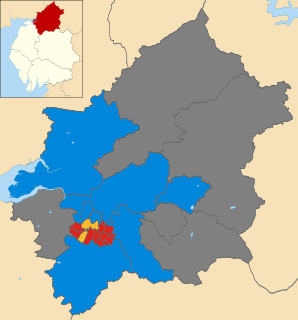 W
WThe 2002 Carlisle City Council election took place on 2 May 2002 to elect members of Carlisle District Council in Cumbria, England. One third of the council was up for election and the Conservative party stayed in overall control of the council.
 W
WElections to Allerdale Borough Council were held on 1 May 2003. The whole council was up for election and the Labour party lost overall control of the council to no overall control.
 W
WThe 2003 Carlisle City Council election took place on 1 May 2003 to elect members of Carlisle District Council in Cumbria, England. One third of the council was up for election and the Conservative party lost overall control of the council to no overall control.
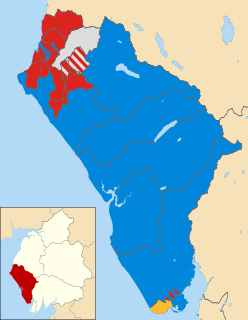 W
WThe 2003 Copeland Borough Council election took place on 1 May 2003 to elect members of Copeland Borough Council in Cumbria, England. The whole council was up for election and the Labour party stayed in overall control of the council.
 W
WThe 2004 Carlisle City Council election took place on 10 June 2004 to elect members of Carlisle District Council in Cumbria, England. One third of the council was up for election and the council stayed under no overall control.
 W
WElections to Barrow-in-Furness Borough Council were held on 4 May 2006. One third of the council was up for election and the Labour party lost overall control of the council to no overall control.
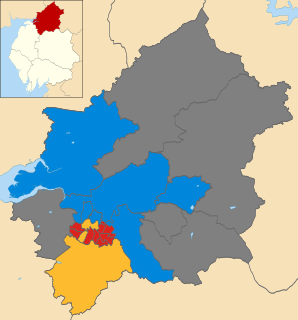 W
WThe 2006 Carlisle City Council election took place on 4 May 2006 to elect members of Carlisle District Council in Cumbria, England. One third of the council was up for election and the council stayed under no overall control.
 W
WThe 2006 South Lakeland District Council election took place on 4 May 2006 to elect members of South Lakeland District Council in Cumbria, England. One third of the council was up for election and the Liberal Democrats gained overall control of the council from no overall control.
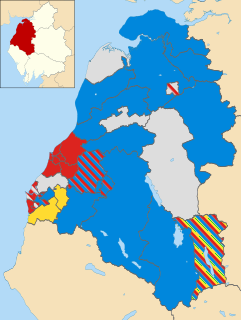 W
WElections to Allerdale Borough Council were held on 3 May 2007. The whole council was up for election and the council stayed under no overall control.
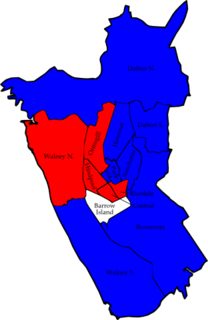 W
WElections to Barrow-in-Furness Borough Council were held on 3 May 2007. One third of the council was up for election and the council stayed under no overall control.
 W
WThe 2007 Carlisle City Council election took place on 3 May 2007 to elect members of Carlisle District Council in Cumbria, England. One third of the council was up for election and the council stayed under no overall control.
 W
WThe 2007 Copeland Borough Council election took place on 3 May 2007 to elect members of Copeland Borough Council in Cumbria, England. The whole council was up for election and the Labour party stayed in overall control of the council.
 W
WThe 2007 South Lakeland District Council election took place on 3 May 2007 to elect members of South Lakeland District Council in Cumbria, England. One third of the council was up for election and the Liberal Democrats stayed in overall control of the council.
 W
WElections to Barrow-in-Furness Borough Council was held on 1 May 2008. The whole of the council was up for election, with the number of councillors falling from 38 to 36, as a result of ward boundary changes enacted in February 2008. Councillors were elected for terms ranging between two and four years; where more than one councillor was elected in a ward, the councillor with the highest number of votes was granted the longer term.
 W
WThe 2008 Carlisle City Council election took place on 1 May 2008 to elect members of Carlisle District Council in Cumbria, England. One third of the council was up for election and the council stayed under no overall control.
 W
WThe 2008 South Lakeland District Council election took place on 1 May 2008 to elect members of South Lakeland District Council in Cumbria, England. The whole council was up for election with boundary changes since the last election in 2007 reducing the number of seats by 1. The Liberal Democrats stayed in overall control of the council.
 W
WAn election to Cumbria County Council took place on 2 May 2013 as part of the 2009 United Kingdom local elections. All 84 councillors were elected from various electoral divisions, which returned one or two county councillors each by first-past-the-post voting for a four-year term of office. They coincided with an election for the European Parliament. All 84 seats in the Council were up for election, and a total of 301 candidates stood. The total number of people registered to vote was 392,931. Prior to the election local Conservatives were leading a coalition with the Liberal Democrats with the Labour party as the council's official opposition.
 W
WDuring the twenty-four hours before Friday 20 November 2009, rainfall of over 300 mm was recorded in Cumbria. Flooding along the Borrowdale and Derwent Valley meant that some areas were up to 8 feet (2.44 m) deep in water. The surge of water off the fells of the Lake District which flowed into Workington down the River Derwent washed away a road bridge and a footbridge. PC Bill Barker was killed when Northside Bridge collapsed. The cemetery at Camerton, historically the burial ground for the community of Seaton, was badly damaged with many gravestones being damaged or upturned.
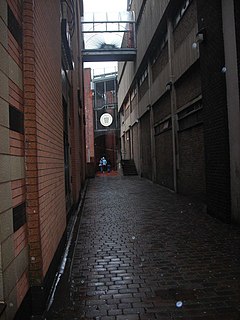 W
WThe 2002 Barrow-in-Furness Legionnaires' disease outbreak was a fatal outbreak of Legionellosis which occurred in Barrow-in-Furness, Cumbria, England. It was and still remains among the worst such outbreaks in history.
 W
WThe Furness General Hospital scandal involves an investigation by Cumbria Constabulary and other government and public bodies into the deaths of several mothers and newborn babies, during the 2000s at Furness General Hospital (FGH) in Barrow-in-Furness, Cumbria, England. Cases date back to 2004, with a number of major incidents occurring in 2008. The death of Joshua Titcombe and a suppressed report by the Morecambe Bay NHS Trust brought the spotlight onto FGH in 2011 when investigations began. Claims of medical records being intentionally destroyed alongside the discovery of major wrongdoing on behalf of midwives led to threats of closure to the maternity ward.
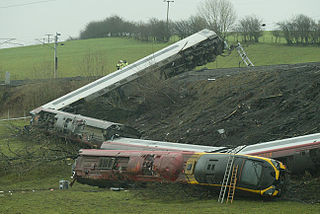 W
WThe Grayrigg derailment was a fatal railway accident that occurred at approximately 20:15 GMT on 23 February 2007, just to the south of Grayrigg, Cumbria, in the North West England region of the United Kingdom. The accident investigation concluded that the derailment was caused by a faulty set of points on the Down Main running line, controlled from Lambrigg ground frame. The scheduled inspection on 18 February 2007 had not taken place and the faults had gone undetected.
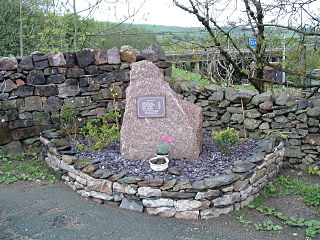 W
WThe Tebay rail accident occurred when four railway workers working on the West Coast Main Line were killed by a runaway wagon near Tebay, Cumbria, England in the early hours of 15 February 2004.